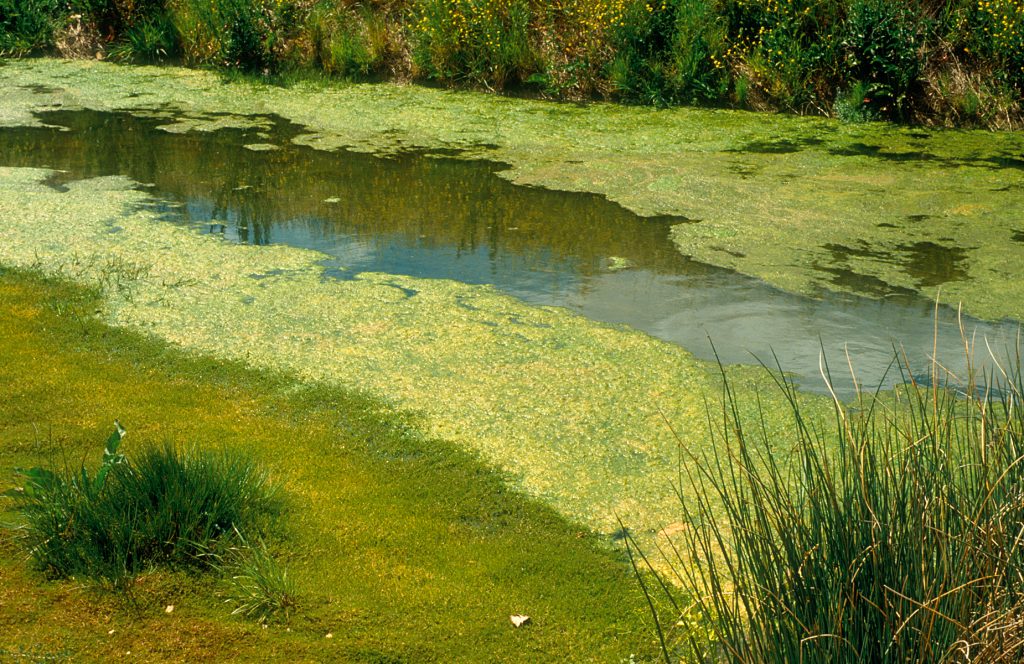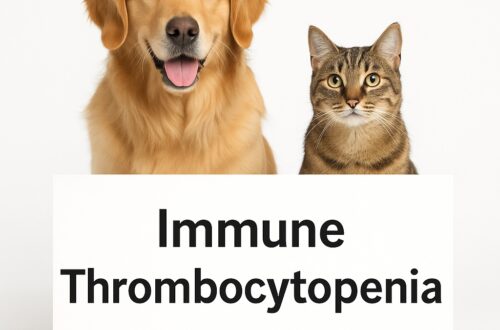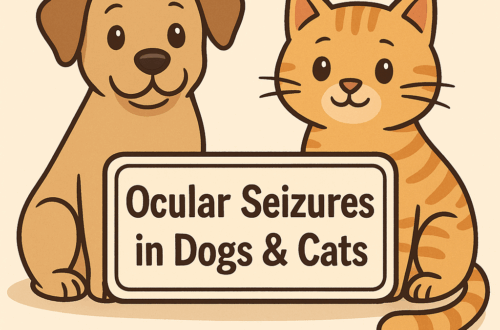With the warm weather months upon us in the northern hemisphere, pet owners need to be aware of a variety of environmental hazards, including poisonous plants and of course, heatstroke. Many families don’t know about the danger of blue-green algae and its potential to kill pets. This week’s post is dedicated to raising awareness of blue-green algae infection. Happy reading!

What is blue-green algae?
Blue-green algae – otherwise known as cyanobacteria – are bacteria found in various bodies of fresh and brackish water, including lakes, streams, and ponds. Backyard fountains, garden pots, and birdbaths are other potential sources of infection. When cyanobacteria grow and colonize, they form “blooms” that give water a blue-green appearance. Some of these “blooms” produce toxins, most notably microcystins and anatoxins. Microcystins cause liver damage and failure, and anatoxins cause neurological toxicity. It’s impossible to determine which “blooms” produce toxins, so all of them should be considered toxic.

What does infection look like?
Dogs who spend a lot of time outdoors – including those who like swimming / playing in lakes & ponds and those who work as hunters, flushers, & retrievers – are over-represented for infection. Clinical signs depend upon the type of toxin produced by the cyanobacteria. Signs of liver dysfunction and failure are:
- Vomiting
- Diarrhea (may contain fresh blood or appear like tar)
- Weakness & lethargy
- Pale gums
- Yellowing of the skin and whites of the eyes (called icterus/jaundice)
- Seizures
- Disorientation
Signs of neurotoxicity associated with anatoxins include increased tear production (called epiphora), increased salivation (called ptyalism), seizures, disorientation, muscle tremors, muscle rigidity, paralysis, cyanosis (blue discoloration of the gums), and difficulty breathing. Patients with respiratory paralysis die within minutes to hours and those with liver failure may succumb to disease within a few days without aggressive critical care.
How is infection diagnosed?
Accurately diagnosing cyanobacteria infection is often based on compatible clinical signs and known or suspected exposure to blue-green algae. If a pet owner knows their dog consumed algae, they should seek immediate medical attention for their pet as even very small exposures can be fatal.
Veterinarians will perform various blood and urine tests to evaluate major organs systems, particularly the liver. Common tests that may be performed include:
- Complete blood count (CBC)
- Serum biochemical profile (CHEM)
- Urinalysis (UA)
- Serum bile acids (SBA)
- Abdominal sonography (AUS)
- Coagulation testing
How is blue-green algae infection treated?
There is no antidote for cyanobacteria infection. So, pets who’ve ingested cyanobacteria should be evaluated by a veterinarian as soon as possible. Without prompt intervention, they could die. Click here to read about a dog in New Brunswick, Canada who sadly succumbed to cyanobacteria infection.
If pets are evaluated before clinical signs manifest, efforts can be undertaken to decontaminate the pet. For example, a veterinarian may induce vomiting and/or may give by mouth a medication called activated charcoal. This drug adsorbs toxins in the gastrointestinal tract, thus preventing absorption. Occasionally, doctors will perform a procedure called gastric lavage (otherwise known as “pumping the stomach”).
Patients with clinical signs of cyanobacteria infection require aggressive critical supportive care. Affected pets often need intravenous fluid therapy and may need a special fluid called plasma if an animal can’t properly clot their blood. Many are nauseated and won’t eat, and thus benefit from anti-nausea medications, appetite stimulants, and even temporary supplemental feeding tubes. Pets may require anti-seizure medications, and liver supportive medications are indicated for those with dysfunction of this organ system. Pet owners will likely find it uniquely helpful to partner with a board-certified veterinary emergency and critical care specialist to ensure their pet receives the most appropriately aggressive care.
The take-away message about blue-green algae and dogs…
Pets may come into contact with potentially harmful infectious organisms called cyanobacteria or blue-green algae when they come into contact with algal “blooms” in fresh or brackish water. The bacteria can produce toxins that may cause neurological problems and/or liver failure. Prompt and aggressive treatment is imperative to maximize the likelihood of a positive outcome.
To find a board-certified veterinary emergency and critical care specialist, please visit the American College of Veterinary Emergency and Critical Care.
Wishing you wet-nosed kisses,
CriticalCareDVM





